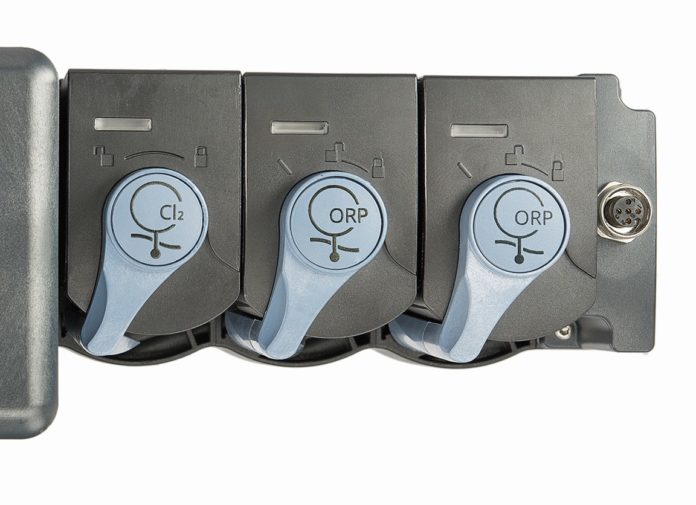See us at: Aquatech 2019, Hall 12, Stand 12.311B
Measuring the quality of water is essential in many sectors. Be it in seawater desalination plants, waterworks, the food and pharmaceutical industry or for water distribution networks, the quality must always be checked, documented, and faults detected immediately. Bürkert Fluid Control Systems has now further developed its proven modular Online Analysis System (Type 8905). As a particularly compact analysis field unit without a display, the analysis system is now available for distributed application. (Image 1).
The field unit can be equipped with up to six sensor cubes, which it supplies with power, and guarantees full communication with the process control system. Required parameters, such as pH, chlorine/chlorine dioxide, conductivity, redox potential (ORP) and turbidity, can be recorded at various points in the process. The range now also includes a sensor cube for iron content.

Using the EDIP (Efficient Device Integration Platform) and graphical programming f(x), all the parameters of the various sensor cubes can be adapted and individual warning messages generated. Bürkert also supports the setup of customised systems.
Measuring iron content fully automatically
The new iron cube (Image 2) is offered to check water for iron quickly and reliably and to carry out a functional check once the iron has been removed. The fully automatic process relieves the burden on users by eliminating the need for manual sampling and analysis, thereby allowing them more time for their core activities.

Using stored parameters, the system recognises anomalies and can issue warnings. This ensures high water quality at all times. The measuring range from 0 to 10 mg/l starts well below the maximum value of 0.2 mg/l as specified by the German Drinking Water Act. Thanks to minimum water and reagent consumption, approximately 100 µl per injection, 250 ml of the chemical is sufficient for roughly 2,500 measurements of approximately one minute each. The interval between individual measurements can be tailored to needs.
The optical flow injection analysis works fully automatically using high-precision microfluidic pumps and valves, is self-calibrating and only has to be cleaned once a year. The reagent containers can be reliably identified via a barcode, which eliminates the risk of incorrect loading.
For further information, see: www.burkert.com/en/Products-Applications/Customised-Solutions/Applications/Monitoring-water-quality-Online-and-continuously









